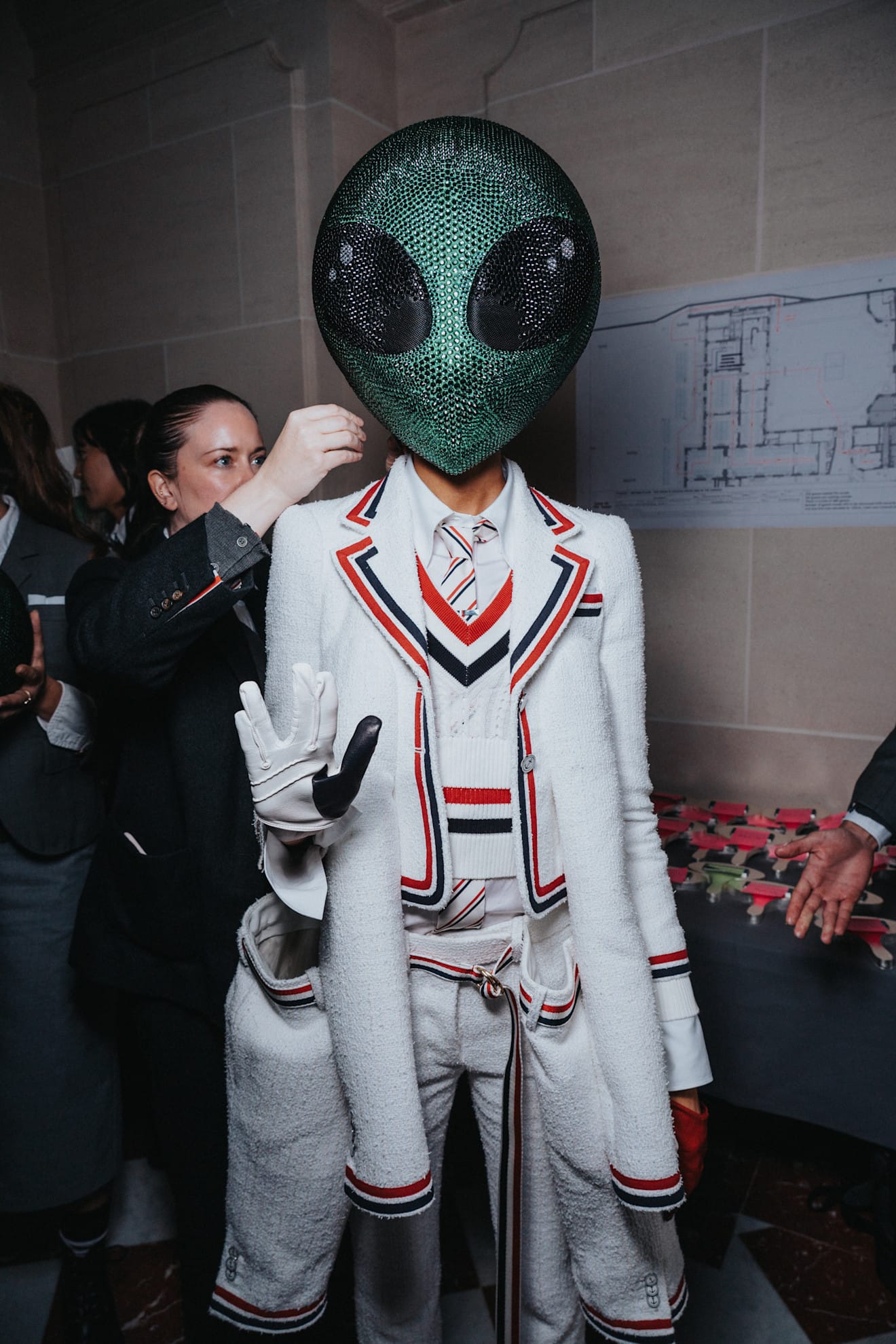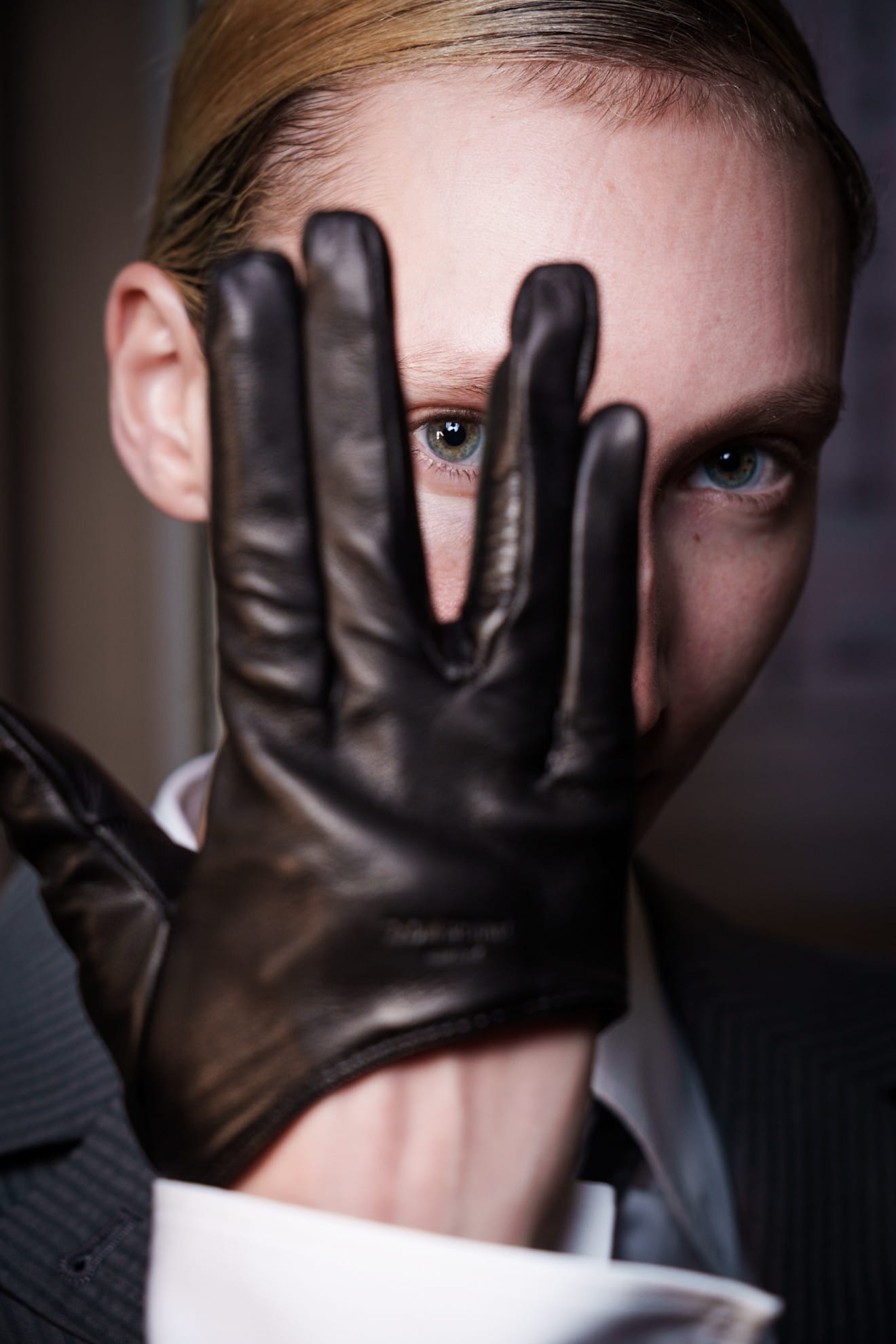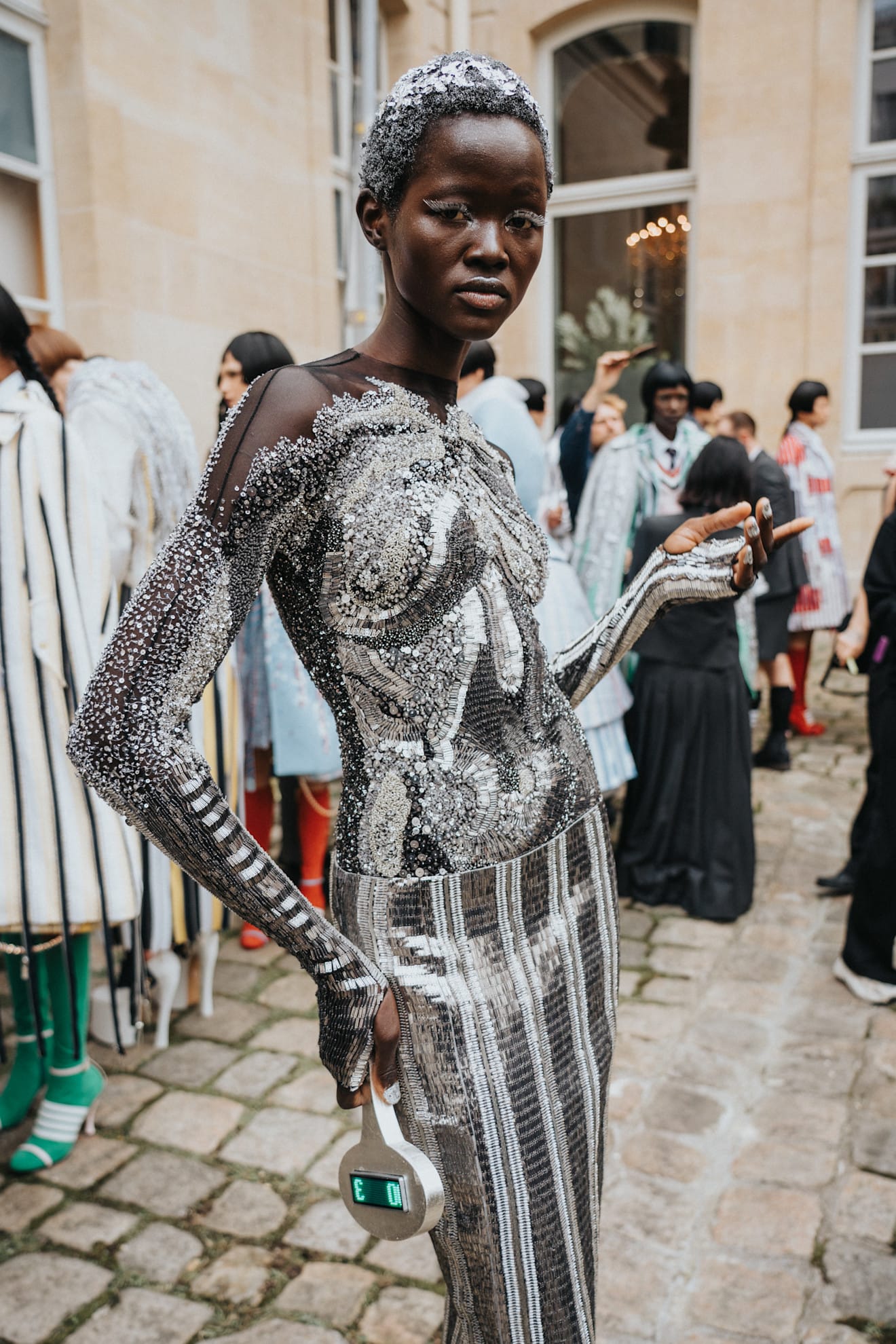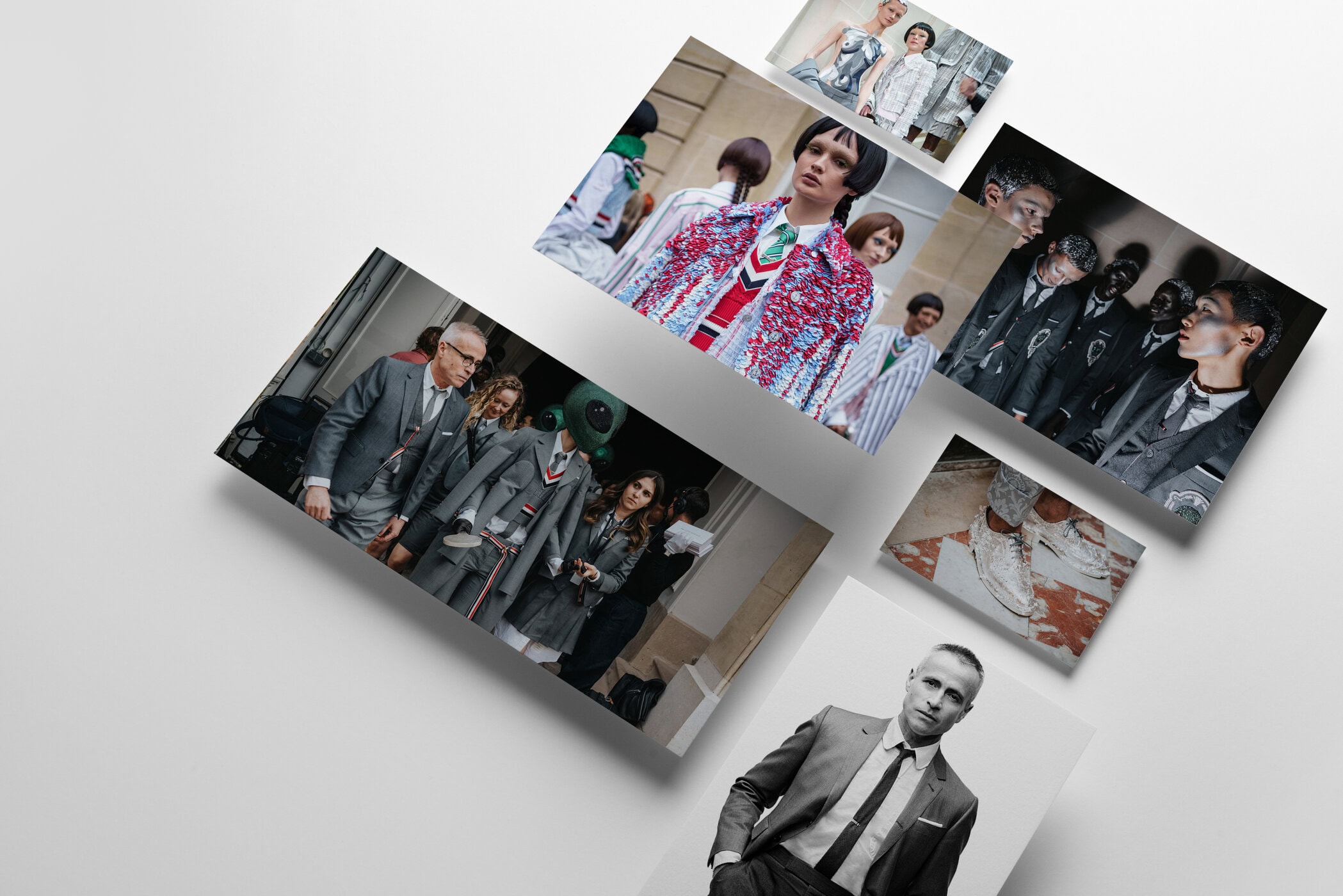In Paris, The Designer Mixed Alien Fantasy With Razor-Sharp Tailoring, Proving That Humor And Rigor Can Share The Same Runway
By Kenneth Richard
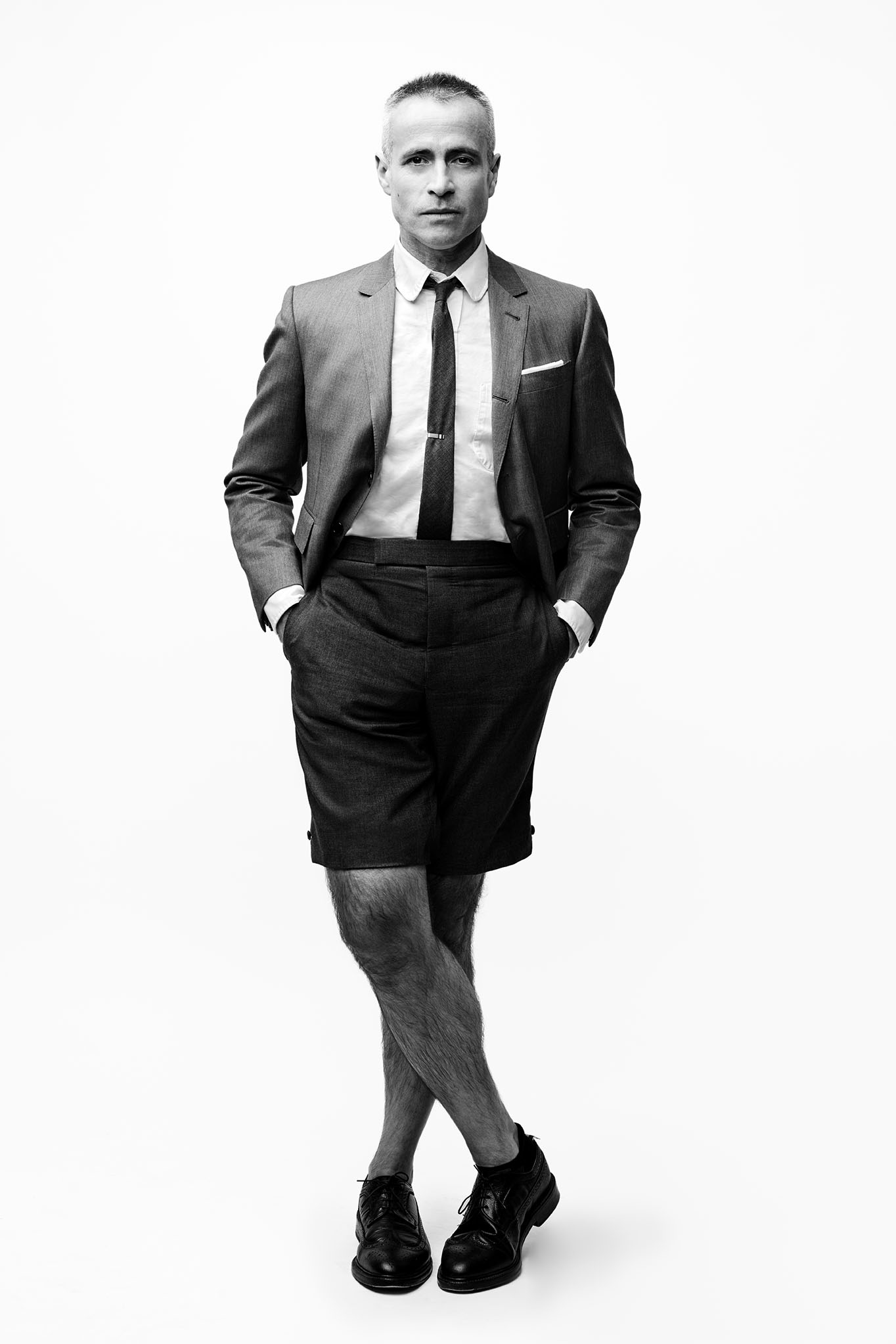
The first notes of Close Encounters of the Third Kind echoed through the Paris venue, five eerie tones filling the air like a signal from another world. Guests leaned in — celebrities, superfans in cropped tailoring, buyers, media — as if awaiting contact. When the first model emerged in sculptural gray, it was clear that Thom Browne had turned the season’s runway into his own landing strip for aliens in tweed.
Backstage, congratulations arrived in waves. Gildo Zegna, CEO of Ermenegildo Zegna Group, clasped the designer’s hand, joined by Angelo Zegna and newly appointed CEO Sam Lobban. Browne, dressed in his customary gray uniform, had just walked the entire show space post-finale, shaking hands in his signature designer’s stride, before climbing a flight of stairs to field questions. His sportsman’s frame carried the ritual with ease; his intelligent, playful spirit animated the conversation. After several seasons in New York, where he also helmed the CFDA, Browne had returned to Paris with a show that balanced fantasy and craft, humor and seriousness.
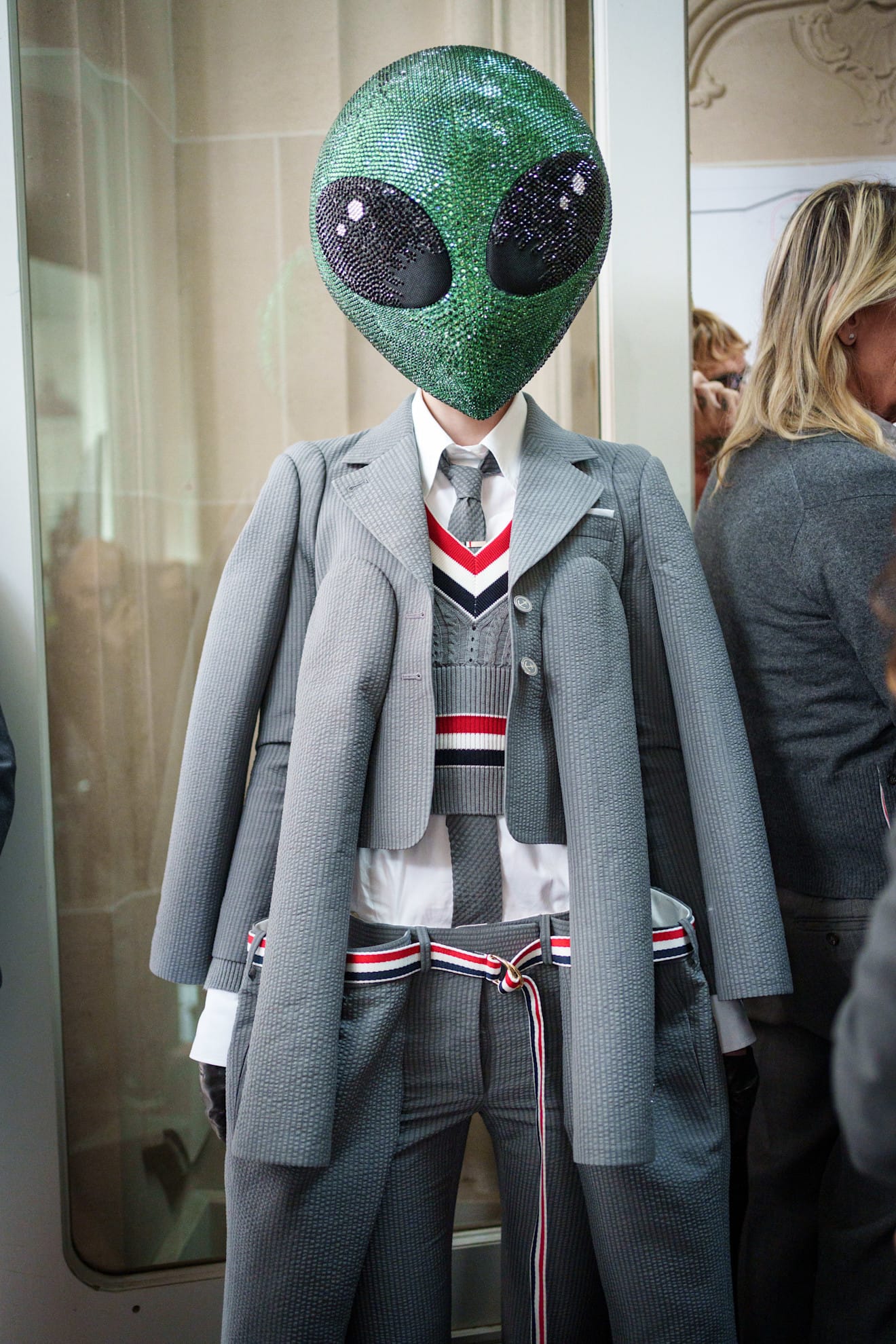
There were a lot of really light tweeds, the chiffon tweeds. I think people see my tailoring and think it’s always heavy. It was nice to do something that wasn’t — seersuckers, tweeds, silk reps, all combined. And in the new shape of the jacket and the pleated skirt, it just felt really young, really alien-like.
That alien theme, sparked by a fitting-room joke about multiple limbs sprouting from trousers, became the show’s throughline. Browne winked at Toy Story and Minions, layering his impeccable construction with a childlike sense of play. “The construction is very serious,” he said, “but I wanted it to have a lighthearted feel.”
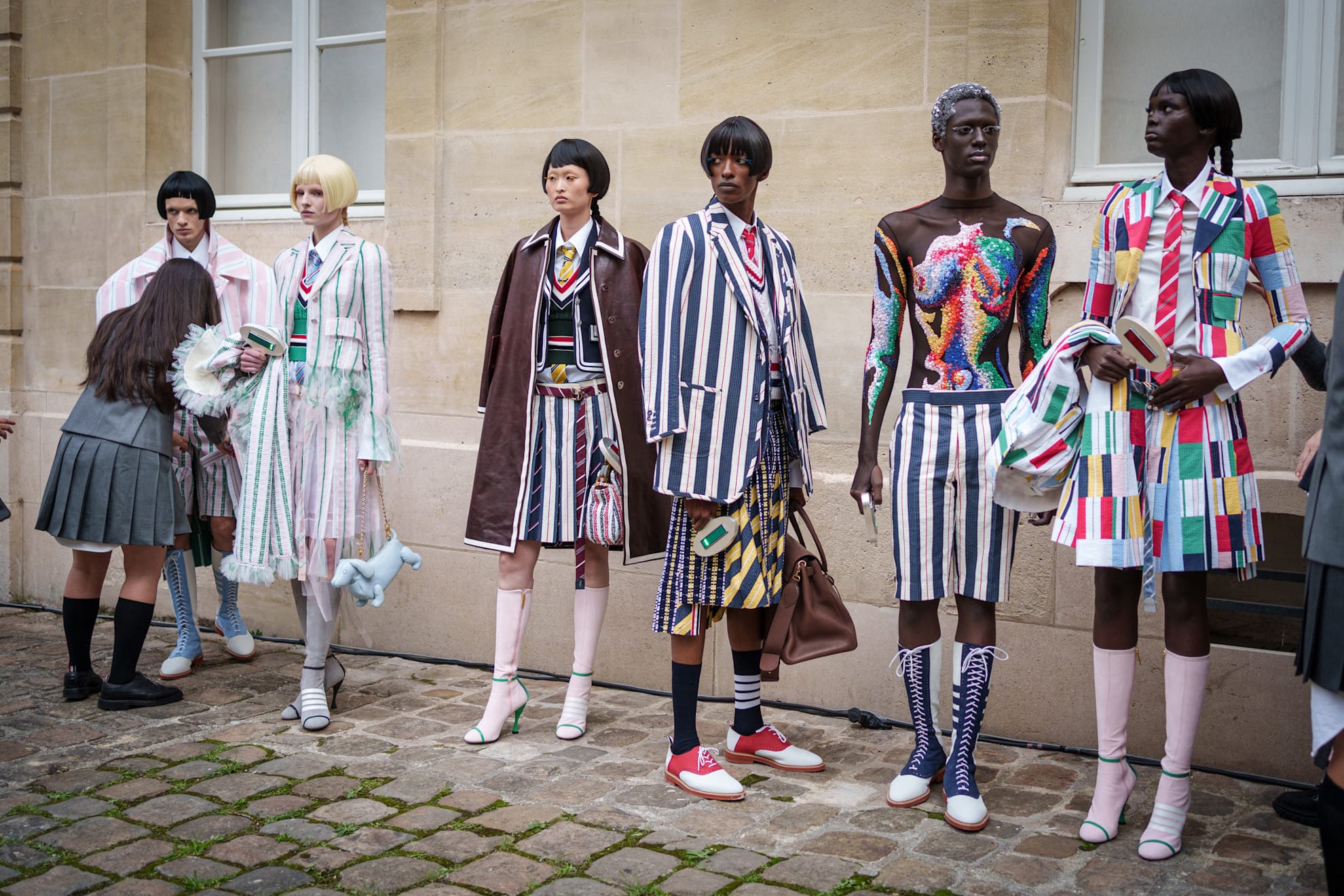
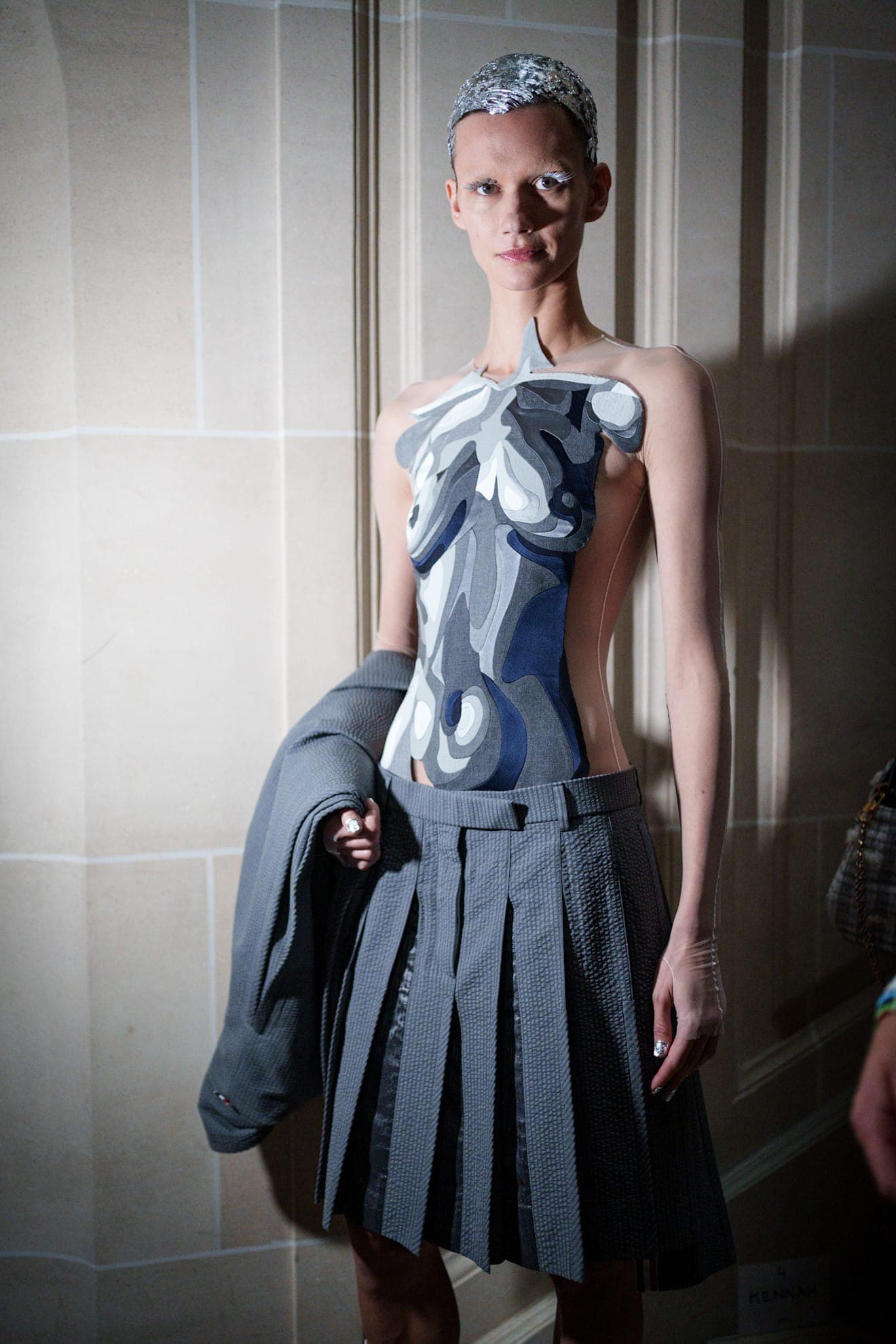
Even his dresses, often rare showpieces, carried wit as well as craft. “I love tailoring, but sometimes I play with the idea,” he said, referring to a pleated tennis dress rendered in trompe l’oeil. He lingered on the technical rigor behind it: “Sometimes people don’t really understand what goes into making that dress.”
Other pieces pushed at new forms: twisted-shoulder jackets that blurred tailoring and sportswear, sterling silver grommets and O-rings that brought couture-level detail into ready-to-wear. Then there were the bodysuits embroidered with human musculature, inspired by a 1920s photograph series. “At first I thought about having someone bare-chested,” Browne admitted. “But I realized it was much more interesting to embroider the body instead.”
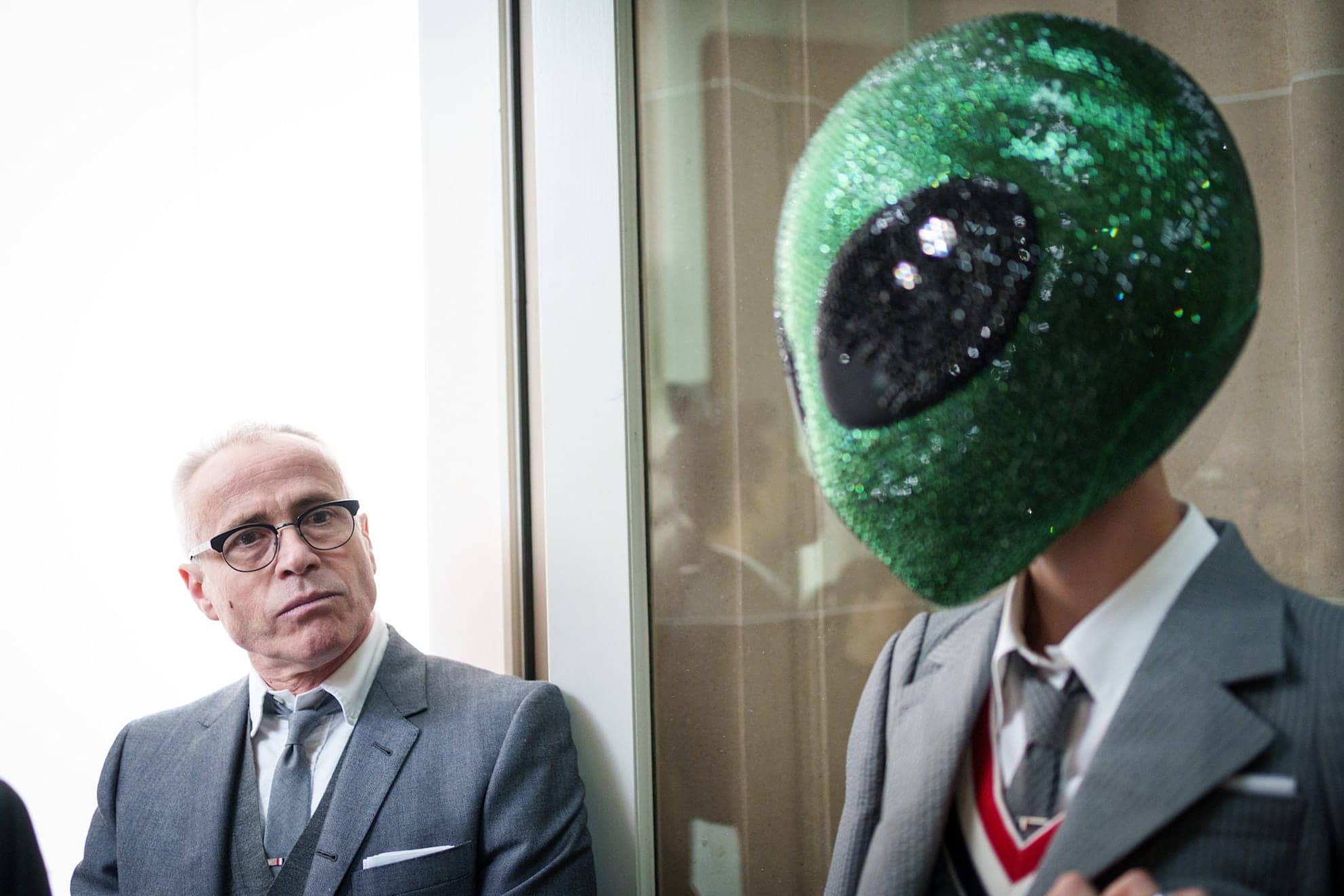
Asked if he believes in UFOs, Browne laughed: “Sure, why not?” But belief wasn’t the point. For him, aliens were a metaphor for fashion’s perpetual outsiders, for the fantasy that allows clothes to escape gravity while being grounded in extraordinary workmanship.
I love making things very seriously. But I also love giving them a personality that isn’t always so serious. What we do is serious — but it’s important to play as well.
And that was the encounter: a collection so precise it felt beamed in from another world. For Paris, it was a close encounter with Thom Browne, and it won’t be the last.
